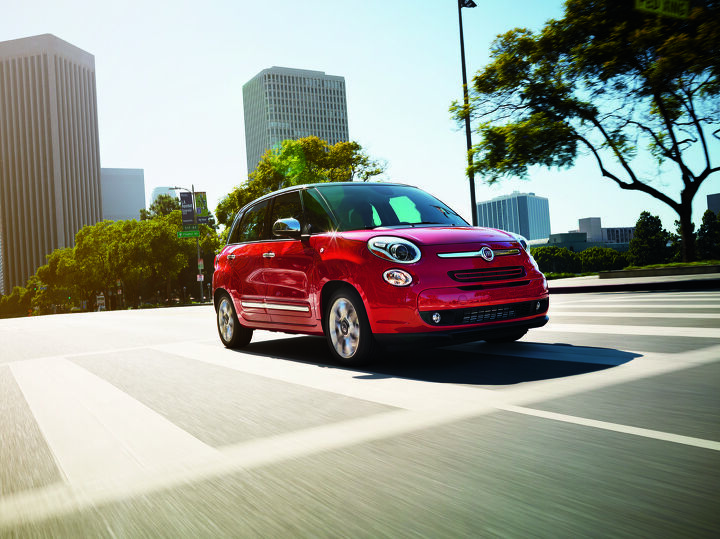Our Long Global Nightmare Is Over - The Fiat 500L Is Back, Baby
The strike is over.
Inventory can once again ramp up.
After 21 days of concern over the future of Fiat 500L, FCA’s Serbian employees are back at work.
And, uh, it doesn’t appear as though dealer stock of 500Ls grew dangerously low in the meantime.
Facilitated by Serbian Prime Minister Ana Brnabic, the end of a worker walkout at the Fiat 500L assembly plant in Kragujevac, Serbia, was the result of PM Brnabic’s willingness to organize and attend negotiations between Fiat and its Serbian workforce.
FCA had made it clear the company would not negotiate with workers during the strike. Brnabic, meanwhile, attempted to lay the weight of the nation’s small economy on the plant workers: “It will be very difficult for us in the future to bring new investors when there is no certainty that workers will honour contracts between unions and employers.” The 500L is the driver of 3 percent of Serbia’s economy and accounts for 8 percent of Serbian exports.
FCA’s Serbian workforce wants to see the company hire more workers so the workload can be more easily distributed. They were also demanding a pay raise to 416 euros per month from 316 euros, the equivalent of USD $365/month.
“The government cannot guarantee what we can get,” Brnabic said after meeting with workers for two hours, “but I will insist on fulfilling as many of the strikers’ demands as possible.”
Tortured by worker unrest at suppliers, its own HR difficulties, and poor global demand for a model Fiat had originally hoped would attract 160,000 customers annually, FCA’s Serbian plant is reportedly built on a foundation of huge government subsidies. Mario Reljanovic, a professor of labor law at Belgrade’s Union University, says, “The subsidies alone are enough to bring them a profit.” But there are rumors that an FCA plant expansion in Poland could allow FCA to shutter the Serbian facility, which has never come remotely close to capitalizing on its capacity.
Stateside, Fiat is barely selling more than 100 500Ls per month, down from an already low high of more than 1,000 per month in 2014. Automotive News says Fiat entered July with a 188-day supply of 1,300 500Ls. During the first-half of 2017, the average U.S. Fiat dealer sold one 500L every three months.
As of Wednesday, July 19, 2017, workers are once again assembling 500Ls in Kragujevac, Serbia.
[Images: Fiat Chrysler Automobiles]
Timothy Cain is a contributing analyst at The Truth About Cars and Autofocus.ca and the founder and former editor of GoodCarBadCar.net. Follow on Twitter @timcaincars.
More by Timothy Cain
Latest Car Reviews
Read moreLatest Product Reviews
Read moreRecent Comments
- Doug brockman There will be many many people living in apartments without dedicated charging facilities in future who will need personal vehicles to get to work and school and for whom mass transit will be an annoying inconvenience
- Jeff Self driving cars are not ready for prime time.
- Lichtronamo Watch as the non-us based automakers shift more production to Mexico in the future.
- 28-Cars-Later " Electrek recently dug around in Tesla’s online parts catalog and found that the windshield costs a whopping $1,900 to replace.To be fair, that’s around what a Mercedes S-Class or Rivian windshield costs, but the Tesla’s glass is unique because of its shape. It’s also worth noting that most insurance plans have glass replacement options that can make the repair a low- or zero-cost issue. "Now I understand why my insurance is so high despite no claims for years and about 7,500 annual miles between three cars.
- AMcA My theory is that that when the Big 3 gave away the store to the UAW in the last contract, there was a side deal in which the UAW promised to go after the non-organized transplant plants. Even the UAW understands that if the wage differential gets too high it's gonna kill the golden goose.



































Comments
Join the conversation
I saw one last month at the Cdn F1 race that had been converted to wheelchair accessible. No back seats, just a wheelchair lift through the back hatch. Owner said it cost him about $20k to convert. Very cool and much more "city friendly" than the usual Chrysler minivan.
Ah yes, the only car ever sold in the US to muster an INFINITY-day supply on dealer lots...and it's not even an Infiniti!